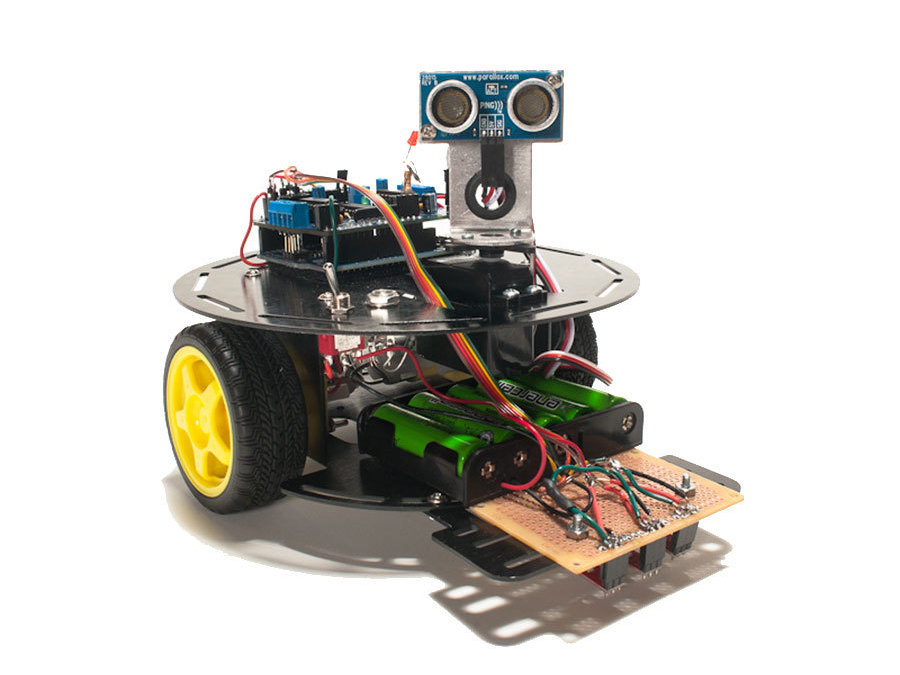If you’d like to do edge detection, mount the sensors as seen in the first photo, with two of the smallest nuts, bolts, and spacers you can find in the hardware bag.
If you’d like to skip edge detection and go straight to line following, head to the next Step.
Don’t worry, you can always come back to edge detection later on!
Next, find your 6-wire ribbon cable, and split it right down the middle.
Split and tin each of the three wires, and solder them to a 3-pin female header. Once the soldering’s done, you can plug the female header right into the sensor and the other ends of the cable into the motor shield. Refer to the second image for a helpful wiring diagram.

